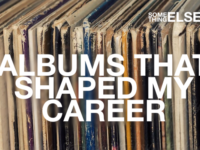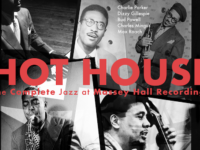Up until the last couple of days, I hadn’t thought about audio cassettes in a good long while. But then I discovered that there exists a freakishly large pile of independent labels dedicated to the form. Mind boggling. And just when I’m inching closer to understanding the cultural implications of this, I hear through the news vine that Ray Dolby has died…and then I’m back in sitting in front of my stereo with my headphones, stack of albums, and blank tapes. Gawd, how I miss making mixtapes.
Which was better, Dolby B or Dolby C? Maybe it had to do with whether I was using a TDK (only the SA-90 would do) or a Maxell (XLII-S) tape? These things always confused me. I think I had settled on the latter as the better tape, but the choice of B vs. C was a tricky one.
For those who are too young to know just what the hell I’m gettin’ on about, Dolby was a noise reduction system built into cassette decks. The idea was that you selected one of the two levels during the recording process and then used that same level during playback. This was supposed to cut tape hiss. The reason the decision was tricky was that not every deck supported both levels. So if you recorded something using Dolby C, it might sound kind of harsh if your playback machine came with only Dolby B. I would have to ask myself, “Will I be playing this in the car?” If the answer was positive, then I’d record with B (because that’s all my low-rent cassette player would support). Strange, but true.
For a lot of people, the words “audio cassette” bring to mind the cheapo pre-recorded variety. The sound quality was fairly dismal with those things, which might make a person wonder why in this day and age of supposed “perfect sound” (pause for eye-roll here), anybody would be bothered with the lowly cassette. From the Rhizome article: “Tapes act to make tangible the connection between a creator and their listeners, and the attentive and often handmade packaging speaks to this exchange.” I have thought for some time now that the lack of a physical object is what makes the digital experience a lesser one. Interesting.
There are no doubt many detractors out there, mumbling that the cassette was crap and that these people are just caving to the demands of nostalgia. Maybe so, but that extra effort being made to connect with the listener? C’mon, what’s wrong with that?
[amazon_enhanced asin=”B00CTAWTFI” container=”B00136LTXM” container_class=”” price=”All” background_color=”FFFFFF” link_color=”000000″ text_color=”0000FF” /] [amazon_enhanced asin=”B00DYAVB9M” container=”B00136LTXM” container_class=”” price=”All” background_color=”FFFFFF” link_color=”000000″ text_color=”0000FF” /]
- Why the Rolling Stones’ Harrowing ‘Gimme Shelter’ is Still Revealing New Depths - November 18, 2024
- How Talking Heads’ ‘Fear of Music’ Opened Up a World of Art and Sound - August 5, 2024
- How Deep Cuts Propelled Bruce Springsteen’s ‘Born in the U.S.A.’ - June 4, 2024





When I first started collecting bootlegs it was all cassette tape. XLIIs were the tape of choice. In fact many folks would berate you (and sometimes send the tapes back) if you dared send them anything but XLIIs. I once had a guy give me a long lecture for sending him a 120 minute tape (it was too heavy and would damage his precious tape deck.)
If memory serves you were supposed to leave Dolby alone too. They didn’t want any kind of changes made in the original sound. Or something.
Yea, I miss mix tapes too.